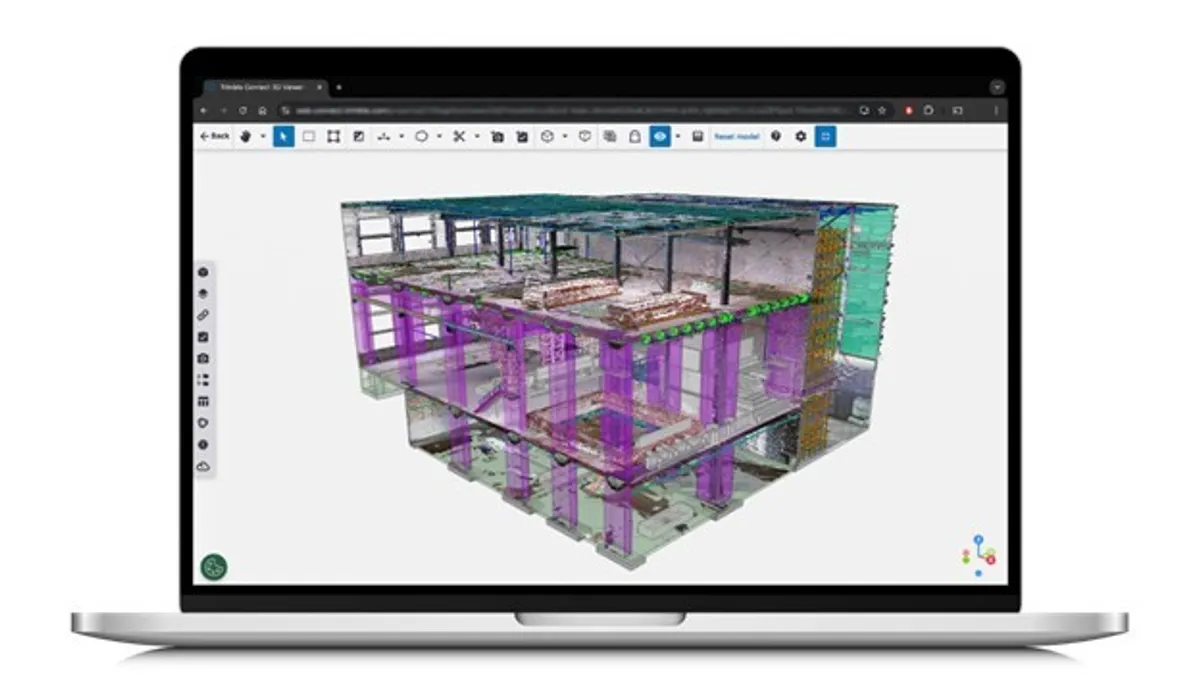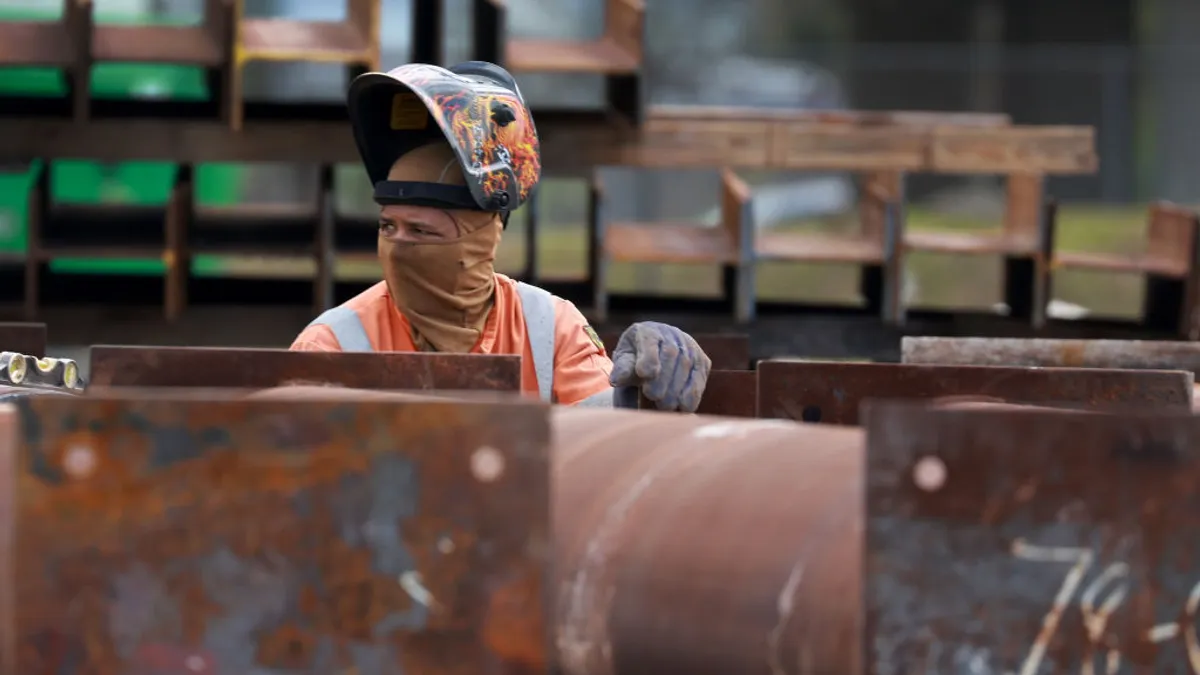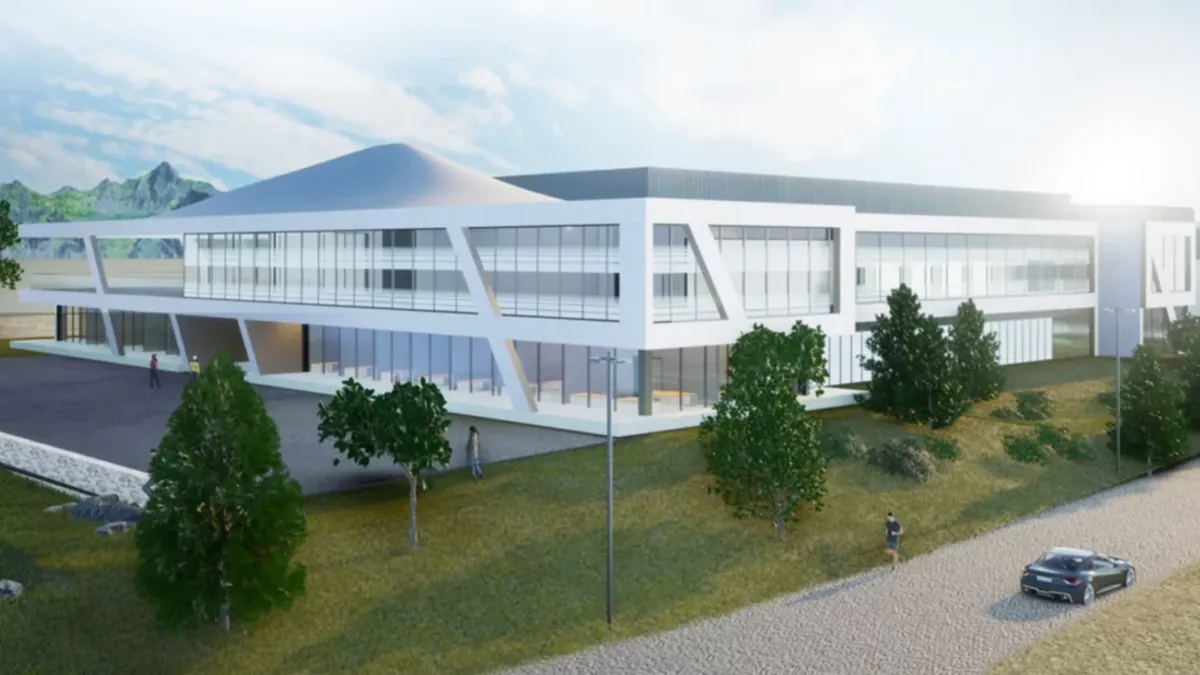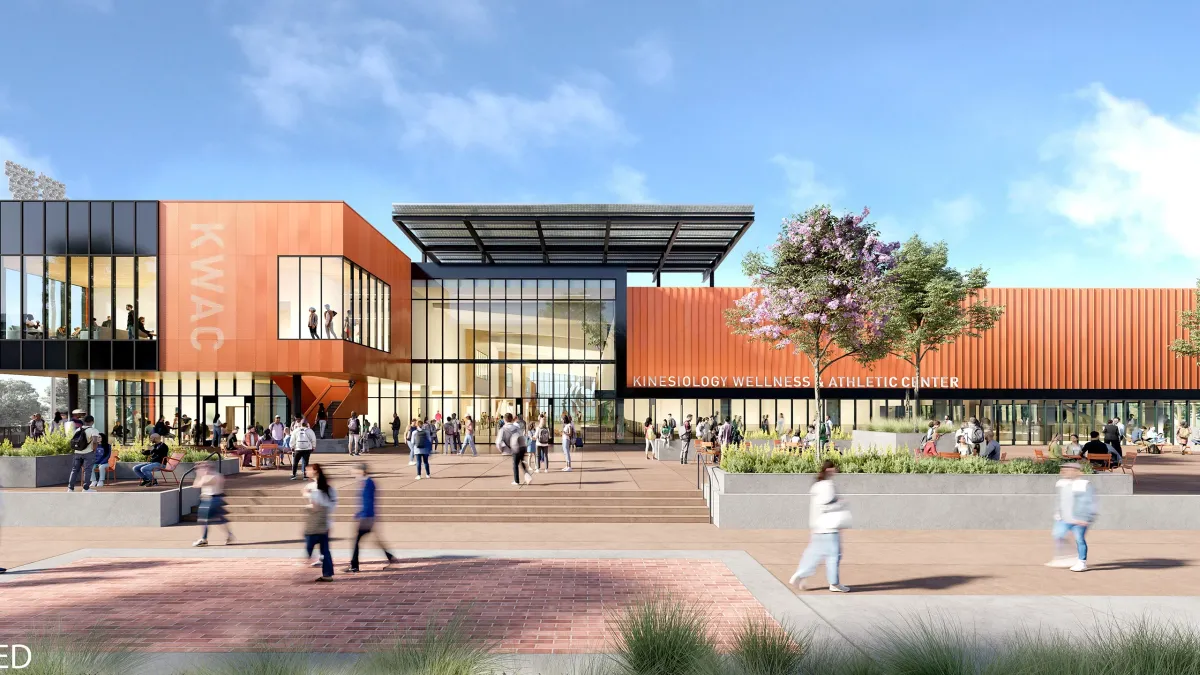Keeping project data straight can be a gargantuan task in itself. Every build is by definition a moving target, with specs and progress status changing daily. This is where technology can help.
Here are six recent announcements from software makers and other tech providers to help keep project info flowing in a useful way, without disrupting the job at hand:
Buildots
On Wednesday, Tel Aviv-based construction technology provider Buildots announced the launch of Dot, a plain language chatbot that gives up-to-date answers about project details.
The new tool leverages Buildots' comprehensive dataset and generative artificial intelligence to provide instant insights in response to direct questions, according to the news release.
Powered by OpenAI’s latest GPT models, and trained by Buildots to work for the construction domain, Dot cross-references multiple data points to provide in-depth analysis, making it easier to measure progress, track implementation and provide visibility to resolve issues before they escalate, the firm says.
“With Dot, we're enabling a whole new way of accessing project information, as if they’re speaking with a colleague, receiving precise insights when they need them,” said Roy Danon, co-founder and CEO of Buildots, in the release.
Users can ask Dot about progress percentages, task completions or trade-specific updates using everyday language. They can follow up on those questions to dig deep and get invaluable information that would otherwise be difficult or time consuming to obtain.
Superintendents can use Dot to guide subcontractors by cross-referencing conditions and ensuring multiple prerequisites are met before starting new tasks. For instance, a superintendent might ask, “Give me a list of apartments where drywall closure is completed but bathroom tiling hasn't started,” enabling them to prioritize the right tasks and allocate resources efficiently, the firm says.
“With Buildots, not only can you track progress, but now you also have this AI assistant that allows you to ask questions about your project progress and dive into it,” said Trent Nichols, national BIM director at Kansas City, Missouri-based JE Dunn, in the release. “It’s a no-brainer.”
Kojo
Materials and inventory management platform Kojo recently announced the launch of Kojo Prefab, designed to help contractors connect their prefabrication shop to the rest of their business.
The San Francisco-based firm says that over 60% of trade contractors incorporate some form of prefabrication into their building processes, according to the news release. Kojo Prefab addresses the rising demand and underscores contractors' needs for improved productivity, quality control, safety performance and cost predictability associated with prefabrication.
Using the tool, field teams can order assemblies from the prefab shop and track the status on Kojo's mobile app. It also allows prefab workers to upload custom images and communicate production updates across teams, according to the release.
"As our prefab shop grew, we turned Sharpie drawings into digital PDFs, but no one was using them, and they were impossible to maintain," said Danny Blankenship, a prefab manager at Baltimore-based United Electric, in the release. "Kojo's Prefab not only digitizes, but the goal is for our teams to use Kojo to communicate what prefab materials are available, create POs and track deliveries — just like ordering a pizza."
Prefab is now available as part of Kojo's expanded suite of features, which also include Procurement, Inventory Management, Tool Tracking and Accounts Payable.
Highwire
Highwire says it has made vetting subs easier than ever. The Boston-based firm introduced its new Prequalification solution to assess default and safety risk posed by subcontractors earlier this month, according to the news release.
The technology platform, which was developed at Harvard to ensure the safety of its students, faculty and contractors while reducing insurance costs for construction projects, streamlines the vetting process for subs while eliminating irrelevant questions that drive contractors crazy by taking scope of work into account.
"We designed our new Prequalification solution with subcontractors in mind,” said Don Fornes, chairman and CEO at Highwire, in the release. “At every step, we sought to remove the friction that has characterized traditional prequalification.”
The tool analyzes everything from financial viability to past project experience, safety performance, insurance and surety bond tracking, and litigation and default history, Highwire said.
The solution’s unveiling comes at a time when 70% of respondents to an Associated General Contractors of America survey reported subcontractor distress or defaults have increased.
Customers include Rosendin Electric and T5 Data Centers, according to the firm.
Trimble
More data, more problems. That’s the issue that Trimble’s new Reality Capture platform tackles.
With more devices gathering information on jobsites today than ever before, the Westminster, Colorado-based contech giant says making sense of geospatial data has become increasingly complex.
The solution stitches together datasets captured with 3D laser scanning, mobile mapping and drones and securely shares it for more effective collaboration, Trimble said in a news release. The service is available as an extension to Trimble Connect, the firm’s cloud-based data platform that has supported more than 30 million users to date.
Trimble Reality Capture offers a secure and intuitive web-based solution for point clouds and 360-degree imagery, the firm said, allowing pros in construction, surveying, transportation infrastructure, utilities and other industries to work on complex reality capture projects while maintaining data integrity and accuracy.
Trimble integrated Microsoft Azure Data Lake Storage and Azure Synapse Analytics into the platform to reduce the time ingesting, storing and processing massive datasets.
"This new service applies cloud technology in a new way for large data packages, allowing users to significantly scale performance and maximize data value," said Boris Skopljak, vice president, geospatial at Trimble, in the release. "With this launch, we are a step closer to realizing living digital twins and artificial intelligence applications at scale."
DroneDeploy
DroneDeploy says it has developed an eye for detail that leverages artificial intelligence to spot safety risks. Earlier this month, the San Francisco-based aerial reality capture firm announced the launch of Safety AI to automatically identify safety risks on construction sites with the help of Google and OpenAI, the creator of ChatGPT, according to a news release.
Safety AI automatically analyzes thousands of images already captured on construction projects, to detect all visible OSHA safety risks. The AI then ranks them based on severity and informs the safety team automatically.
“With Safety AI, your most seasoned safety managers can monitor safety practice on every project, every day,” James Pipe, DroneDeploy’s chief product officer, said in the release.
The firm said beta customers leveraged the tech to reduce the occurrence of unsafe conditions by up to 89% within three weeks. Tapping large multimodal models, the technology — which the company said was “near impossible just 12 months ago” — reports on visible safety risks to a 95% accuracy level.
Troy Nichols, assistant safety director at Ogden, Utah-based contractor Wadman Corp. and a Safety AI user, said in the release he likes the extra set of eyes. "I’m not at the project every day so when I receive the Safety AI reports, I'm able to reach out to the project team so we can discuss the activities that are in progress and determine what we need to do to get any safety risks taken care of,” he said.
The firm says that Safety AI is available for all customers of DroneDeploy’s current Ground solution, and can be activated instantly. It can also be run on historical data, ensuring past risks are identified and addressed, the firm said.
MOCA Systems
MOCA Systems Inc. recently enhanced its Touchplan digital production planning platform to enable synchronization with Oracle’s project management and scheduling system, Primavera P6, according to the news release.
The Boston-based firm says that the union of technologies eliminates the problem of schedule drift, where the P6 master schedule in the back office becomes out of sync with live workflow events in the field, resulting in increased budget and schedule risks for large, complex construction projects.
It combines the time-oriented P6, which follows the critical path method, with action-oriented features of Touchplan, which is based on the Last Planner System. By working together they keep the jobsite workflow and the contract schedule continuously synchronized, but the systems have different logic, data formats and end-users, making automated integration problematic.
The latest enhancements to Touchplan provide a novel solution to this problem, the firm says.
“Some planning software vendors have attempted to automate data and logic translation between the CPM system and LPS tools, resulting in a dissatisfying loss of control and autonomy for the users of both systems,” said Brett Adamczyk, MOCA’s software division chief, in the release. “By contrast, with Touchplan we took a different, human-in-the-loop approach to keep experienced CPM and LPS experts in control of data selection and logic translation, while eliminating the drudgery of manually reformatting data and moving it between systems.”
The new Touchplan features have been used successfully by a panel of experienced P6 and Touchplan users who have collaborated with the Touchplan engineering team to develop the most effective way to unify the systems.
“Combining the systems in this way is a boon to our planning productivity. It lets our experts spend more time managing project complexity, and less time managing project data,” said Layne Hess, corporate director of scheduling and planning at Utah-based Jacobsen Construction, a P6 and Touchplan customer, in the release.
The new features are available at no additional cost to current and new Touchplan customers.





















